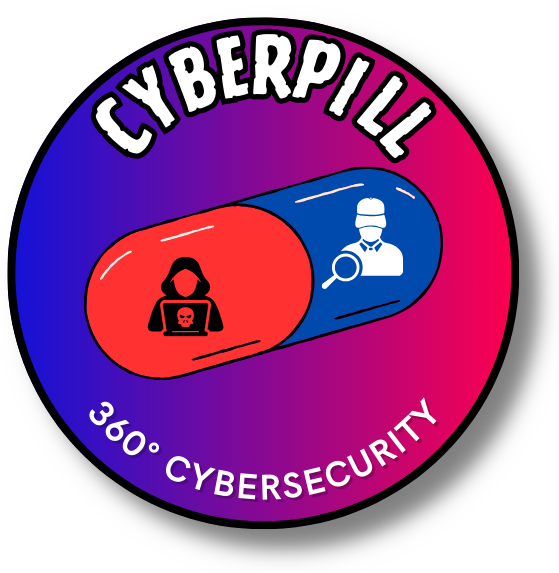In today’s digital age, it’s more important than ever to protect yourself from phishing attacks. These malicious attempts at stealing your personal information can happen through emails, social media, or even text messages. But fear not, because we’ve got you covered with these 10 useful tips that will help you stay one step ahead and keep your data secure. So, sit back, relax, and let us guide you on the path to understanding and protecting yourself from phishing attacks.

10 Tips to Protect Yourself from Phishing Attacks
Phishing attacks have become increasingly common in today’s digital age. These malicious attempts to steal personal information can have devastating consequences, from financial loss to identity theft. It is crucial to be aware of the risks and take proactive measures to protect yourself. In this article, we will provide you with 10 essential tips to safeguard against phishing attacks.
Understand Phishing Attacks
What is Phishing?
Phishing is a type of cyber attack where attackers impersonate a trustworthy entity to deceive victims into revealing sensitive information like passwords, credit card numbers, or social security numbers. These attackers often masquerade as legitimate organizations, such as banks, social media platforms, or online retailers, employing various tactics to gain the victim’s trust.
How Phishing Attacks Work
Phishing attacks typically begin with a fraudulent email or message that appears to be from a trustworthy source. The message often contains a sense of urgency or a tempting offer to entice recipients to click on a malicious link or open an infected attachment. Once the victim falls into the trap and provides their information, the attackers can use it to exploit them financially or steal their identity.
Common Types of Phishing Attacks
There are several common types of phishing attacks to be aware of:
- Email Phishing: Attackers send fraudulent emails to a large number of recipients, posing as a reputable organization and requesting sensitive information.
- Spear Phishing: Attackers target specific individuals or organizations, customizing their phishing attempts to appear highly personalized and convincing.
- Smishing: Phishing attacks carried out through SMS (text messages) are known as smishing attacks. These messages often contain links or prompts to reply with sensitive information.
- Vishing: Attackers use voice communication, typically over the phone, to trick victims into revealing their personal or financial details.

Educate Yourself
Stay Informed about Latest Phishing Techniques
Phishing techniques continually evolve, with attackers becoming more sophisticated in their methods. It is essential to stay informed about the latest phishing trends and tactics by regularly reading cybersecurity news, blogs, and reports. By staying up to date, you can better recognize and avoid falling victim to new phishing techniques.
Recognize Phishing Red Flags
It’s crucial to be able to identify potential red flags that indicate a phishing attempt. Some common red flags include:
- Poor grammar or spelling mistakes in the email or message.
- Messages that create a sense of urgency or fear, pressuring you to disclose sensitive information quickly.
- Suspicious email addresses or domains that don’t align with the claimed sender.
- Requests for personal information or login credentials via email or text message.
Know the Common Targets of Phishing Attacks
Attackers often target specific groups of individuals or organizations based on their vulnerabilities or potential for high-value information. Common targets for phishing attacks may include:
- Employees of organizations with access to sensitive data.
- Senior executives who have authority over financial transactions.
- Customers of popular online retailers or banks.
- Users of social media platforms with large followings.
By understanding the common targets, you can be more vigilant and cautious when interacting with emails and messages.
Think Before You Click
Hover over Links to Verify Their Legitimacy
Before clicking on any link, it is essential to hover your mouse over it to reveal the actual URL. Phishing attempts often use deceptive tactics by displaying a different link text than the actual destination. By hovering over the link, you can ensure that the URL matches the website you expect to visit.
Avoid Clicking on Suspicious Links
If you receive an unsolicited email or message with a link that seems suspicious or out of context, it’s best to err on the side of caution and avoid clicking it. Instead, manually type the URL into your web browser or use a search engine to find the correct website.
Be Cautious with Email Attachments
Attachments can contain malware that can infect your computer or device when opened. Exercise caution when receiving unexpected or suspicious attachments, especially from unknown senders. Before opening any attachment, consider verifying its legitimacy with the sender through another communication channel.

Verify Email Senders
Double-Check Email Addresses
Phishing attackers often use deceptive email addresses that closely resemble legitimate ones. Double-check the sender’s email address for any inconsistencies or abnormalities. Look for misspellings, extra characters, or domain names that differ slightly from the genuine organization’s domain.
Look for Signs of Spoofed Emails
Spoofed emails attempt to mimic legitimate organizations by copying their branding, logos, and email templates. However, there are often telltale signs of a spoofed email. Look for unusual email layouts, poor image quality, or incorrect contact information within the message.
Confirm with the Sender
If you receive an email that requests personal information, especially if it is unexpected or seems suspicious, it is always best to contact the sender directly through a verified and trusted communication channel. Confirm the legitimacy of the email and the request before providing any sensitive information.
Beware of Urgent or Threatening Language
Phishing emails often use urgent or threatening language to pressure victims into taking immediate action. Be cautious of emails that use fear tactics, warning of dire consequences if you fail to provide the requested information promptly. Legitimate organizations typically do not employ such aggressive language in their communications.
Keep Your Software Updated
Update Operating System and Applications
Keeping your operating system and applications up to date is essential for maintaining the security and functionality of your devices. Software updates often contain security patches that address vulnerabilities that attackers may exploit.
Enable Automatic Updates
To ensure that you don’t miss any critical updates, consider enabling automatic updates on your devices. This way, whenever a new update is released, your system will automatically install it, making it easier to stay protected against security threats.
Regularly Patch Vulnerabilities
In addition to applying updates, regularly check for software vulnerabilities and apply the necessary patches. Many software vendors release patches or security updates to address known vulnerabilities and improve overall system security. By keeping your software patched, you minimize the risk of falling victim to phishing attacks that exploit these vulnerabilities.

Use Strong and Unique Passwords
Create Complex Passwords
A strong password should be a mixture of uppercase and lowercase letters, numbers, and special characters. Avoid using easily guessable information like birthdates or common words. Ideally, your password should be at least 12 characters long to ensure maximum security.
Avoid Using Personal Information
Phishing attackers can easily find personal information about you through online sources. Avoid using any personal details, such as your name, address, or phone number, in your passwords. By doing so, you make it more difficult for attackers to guess or crack your passwords.
Use Different Passwords for Different Accounts
Using unique passwords for each online account adds an extra layer of protection. If a hacker gains access to one of your accounts, using the same password across multiple accounts puts all of them at risk. By using different passwords, you minimize the potential damage of a successful phishing attack.
Consider Using a Password Manager
Managing multiple strong and unique passwords can be challenging. Consider using a password manager tool that securely stores your passwords and generates strong, random passwords for you. This helps streamline password management and eliminates the need to remember multiple complex passwords.
Enable Two-Factor Authentication
Add an Extra Layer of Security
Two-factor authentication (2FA) provides an additional layer of security by requiring users to provide two forms of verification before accessing an account. This typically involves entering a password and a unique code sent to a trusted device or generated by an authenticator app.
Use Authenticator Apps or Hardware Tokens
Authenticator apps like Google Authenticator or hardware tokens are more secure methods of receiving 2FA codes compared to SMS-based authentication. Authenticator apps generate time-based codes that are not susceptible to interception or SIM card swapping. Using these methods enhances the security of your accounts.
Don’t Rely Solely on SMS-based Authentication
SMS-based authentication, where a verification code is sent to your mobile device via text message, is better than no 2FA at all. However, it is less secure than other methods, as attackers can intercept or redirect SMS messages. Whenever possible, opt for authenticator apps or hardware tokens for stronger protection.

Beware of Suspicious Emails and Messages
Watch Out for Poor Grammar and Spelling Mistakes
Phishing emails often contain grammar or spelling mistakes, as attackers may not have a strong command of the language they are impersonating. If you notice numerous errors or awkward sentence structures in an email, it could be a sign of a phishing attempt.
Be Skeptical of Unsolicited Emails
Be cautious of emails that appear out of the blue, especially if they request sensitive information or prompt you to take immediate action. Legitimate organizations typically do not contact individuals asking for personal details via unsolicited emails. When in doubt, reach out to the organization through a verified channel to confirm the legitimacy of the request.
Avoid Sharing Sensitive Information
Never share sensitive information like passwords, social security numbers, or financial details through email or messages unless you are certain about the legitimacy of the recipient. Legitimate organizations usually have secure systems in place to handle such sensitive data and would not ask for them via email.
Don’t Trust Unexpected Prize or Lottery Notifications
Phishing attackers often use the prospect of winning a prize or lottery as bait to trick victims into providing their personal information. Be skeptical of unexpected notifications claiming you have won something, especially if you did not participate in any lottery or contest. Legitimate sweepstakes or contests will not ask for personal information via email.
Regularly Back Up Your Data
Backup Important Files and Data
Regularly backing up your important files and data is crucial in case of a phishing attack or any other form of data loss. Backup your files on a separate storage device or use cloud storage services to ensure that you have a safe and recoverable copy of your data.
Use Cloud Storage or External Devices
Cloud storage services like Google Drive or Dropbox offer convenient and secure options for backing up your data. They provide automatic syncing, encryption, and accessibility from multiple devices. Alternatively, you can use external hard drives or USB flash drives to store backups offline for added security.
Periodically Test Your Backups
It’s not enough to simply create backups; you should also test their restorability. Periodically restore a few files to ensure that your backups are working correctly and that you can recover your data if needed. Regular testing will give you peace of mind knowing that your backups are reliable.
By following these 10 tips, you can significantly reduce the risk of falling victim to phishing attacks. Stay vigilant, remain informed, and prioritize cybersecurity to protect yourself and your sensitive information from the ever-increasing threats in the digital landscape.

